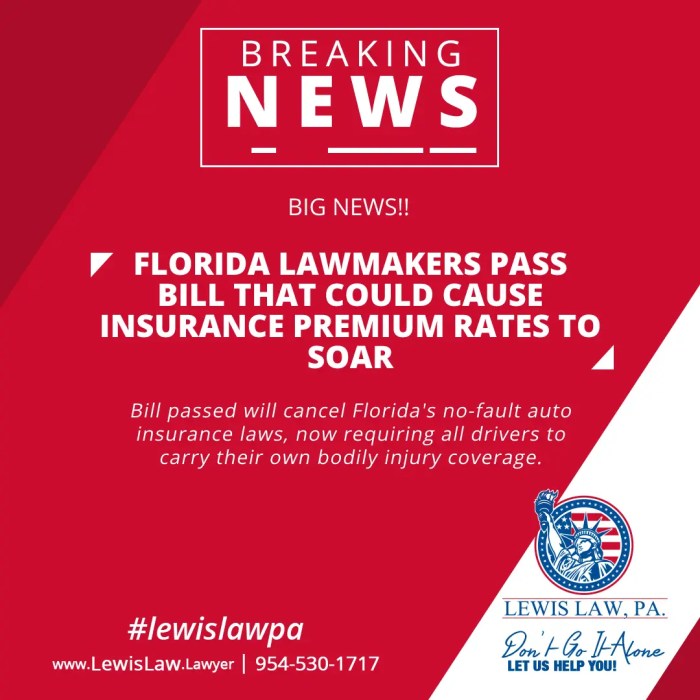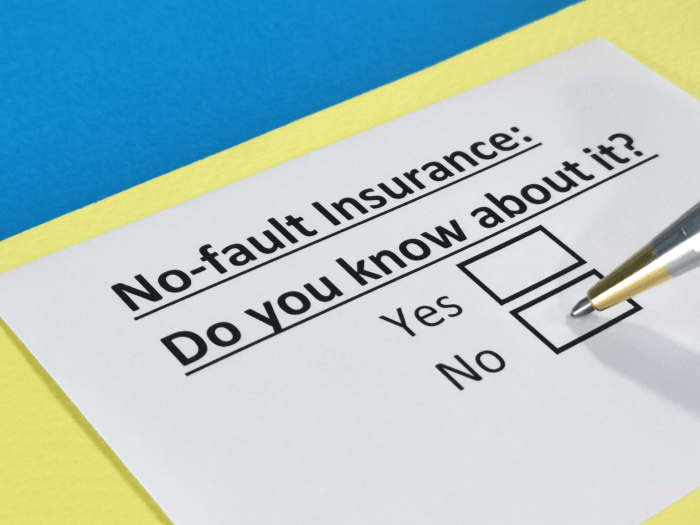La ley de no culpabilidad requiere cobertura mÃnima de – No-fault laws, a cornerstone of automobile insurance, have significantly altered the landscape of accident litigation. This comprehensive guide delves into the intricacies of no-fault coverage, exploring its requirements, benefits, limitations, and exceptions. By examining the evolving landscape of no-fault laws, we gain insights into their impact on insurance policies and accident resolution.
Definition of No-Fault Law: La Ley De No Culpabilidad Requiere Cobertura MÃnima De

A no-fault law is a legal framework that governs automobile accident claims. It differs from traditional tort-based systems by eliminating the need to prove fault in order to recover compensation for injuries or damages.
No-fault laws aim to streamline the claims process, reduce litigation, and ensure that victims of car accidents receive prompt and fair compensation, regardless of who is at fault.
Coverage Requirements Under No-Fault Laws
No-fault laws typically mandate minimum coverage requirements for all drivers. These requirements vary by jurisdiction but generally include:
- Personal Injury Protection (PIP): Coverage for medical expenses, lost wages, and other related costs incurred by the insured and their passengers.
- Property Damage Liability (PDL): Coverage for damage to property belonging to other parties, such as vehicles or structures.
Types of No-Fault Coverage
No-fault coverage can be divided into two main categories:
- First-Party Coverage:Coverage that pays for expenses incurred by the insured and their passengers, regardless of fault.
- Third-Party Coverage:Coverage that pays for expenses incurred by other parties, such as property damage or medical expenses.
Benefits and Limitations of No-Fault Coverage
No-fault coverage offers several advantages, including:
- Faster claims processing
- Reduced litigation
- Guaranteed compensation for victims
However, there are also some potential drawbacks:
- Higher insurance premiums
- Limitations on recovery for serious injuries
Exceptions to No-Fault Coverage
No-fault coverage may not apply in certain circumstances, such as:
- Intentional acts
- Accidents involving uninsured drivers
- Injuries sustained while committing a crime
Comparison of No-Fault Laws in Different Jurisdictions, La ley de no culpabilidad requiere cobertura mÃnima de
No-fault laws vary significantly across different states and countries. Some key differences include:
- Coverage requirements
- Benefits and limitations
- Exceptions to coverage
Emerging Trends in No-Fault Laws
No-fault laws are constantly evolving. Recent trends include:
- Increased focus on reducing insurance costs
- Expansion of coverage for non-economic losses
- Adoption of no-fault laws in new jurisdictions
Detailed FAQs
What is the purpose of no-fault laws?
No-fault laws aim to expedite claims processing, reduce litigation, and ensure prompt compensation for accident victims, regardless of fault.
What are the minimum coverage requirements under no-fault laws?
Minimum coverage requirements vary by jurisdiction but typically include personal injury protection (PIP) and property damage liability (PDL).
What are the benefits of no-fault coverage?
Benefits include faster claims processing, reduced litigation costs, and guaranteed compensation for medical expenses and lost wages.
What are the limitations of no-fault coverage?
Limitations include higher insurance premiums, potential limits on recovery, and the exclusion of certain types of damages, such as pain and suffering.
What are the exceptions to no-fault coverage?
Exceptions may apply in cases of intentional acts, accidents involving uninsured drivers, or when damages exceed the coverage limits.


